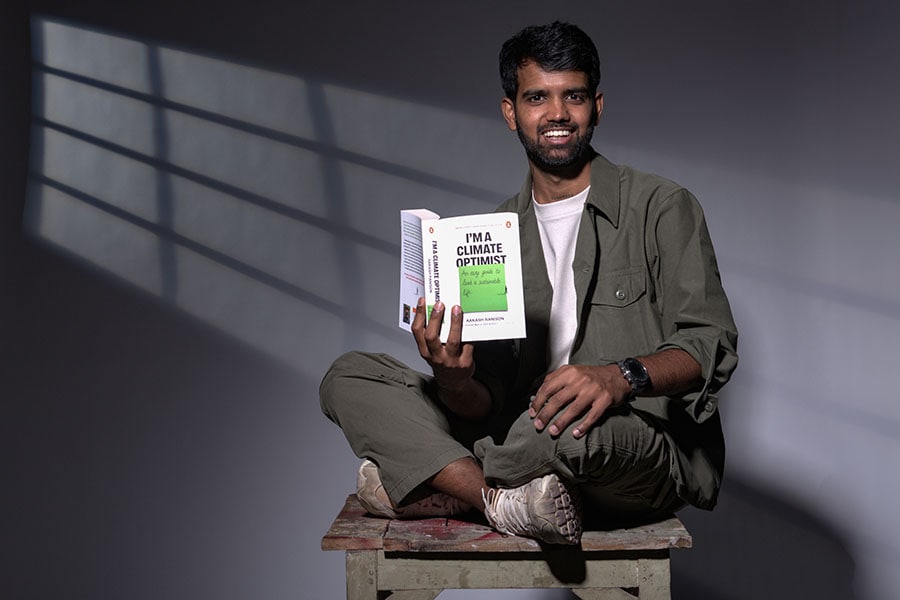
Businesses profit off the environment so they have to let go of money to save it: Aakash Ranison
Digital content creator Aakash Ranison on his new book, whether social media is able to create impactful awareness around climate change, and how individuals and businesses can do their bit
 Aakash Ranison, a Digital content creator and climate optimist
Aakash Ranison, a Digital content creator and climate optimist
Aakash Ranison calls himself a climate optimist, which is also the title of his new book. The 28-year-old digital influencer wants to put his skills to good use across online and offline mediums to create more awareness among people about climate change. He has over 45,000 followers on Instagram, and thousands on Twitter and YouTube, where he has conversations around climate change. He leads a minimalist life, runs his own non-profit called the Greener Earth Foundation, and has now written a book. In fact, all royalties from the book will be donated to his charity.
Ranison says he has written this book because climate change is often talked about in technical terms—like ‘carbon neutral’, ‘net-zero’, ‘climate emergency’ etc., for instance—which often leaves lay people wondering if they will ever be able to contribute, at a personal level, to make a difference. There are policy-level discussions and sustainability goals, yes, but how do we, as individuals, play a role in climate conversations? Ranison’s book tries to answer this question.
He takes stock of industries like mobility, food, beauty and cosmetics, textiles and tourism, and ties it down to everyday actionable things that you can follow in daily life. He also has a game-plan for corporates to be more responsible and follow sustainable practices. Edited excerpts from a conversation on Forbes India’s From the Bookshelves podcast:
Q. Why did you think you were qualified to write a book on climate change, covering various industries and a wide spectrum of topics? If you had to reflect on your work and impact in this space, how would you sum that up?
I’m just a passionate guy. I’ve been travelling around the globe for 10 years and while travelling, I realised that I’m not travelling for food, architecture, but for nature. And if you love anything, you try to protect it. That’s when I started putting whatever skills I have towards protecting the environment. About eight years ago, I started reading up on climate change, took up courses from different universities, and understood that my skillset is in communication. I can communicate things to people in a simple, artistic way. That is when I started making art installations to communicate the message of climate change, wrote articles, and sometimes did short-form content or documentaries. I then felt like I should compile a book that offers solutions to people to live a sustainable life.








